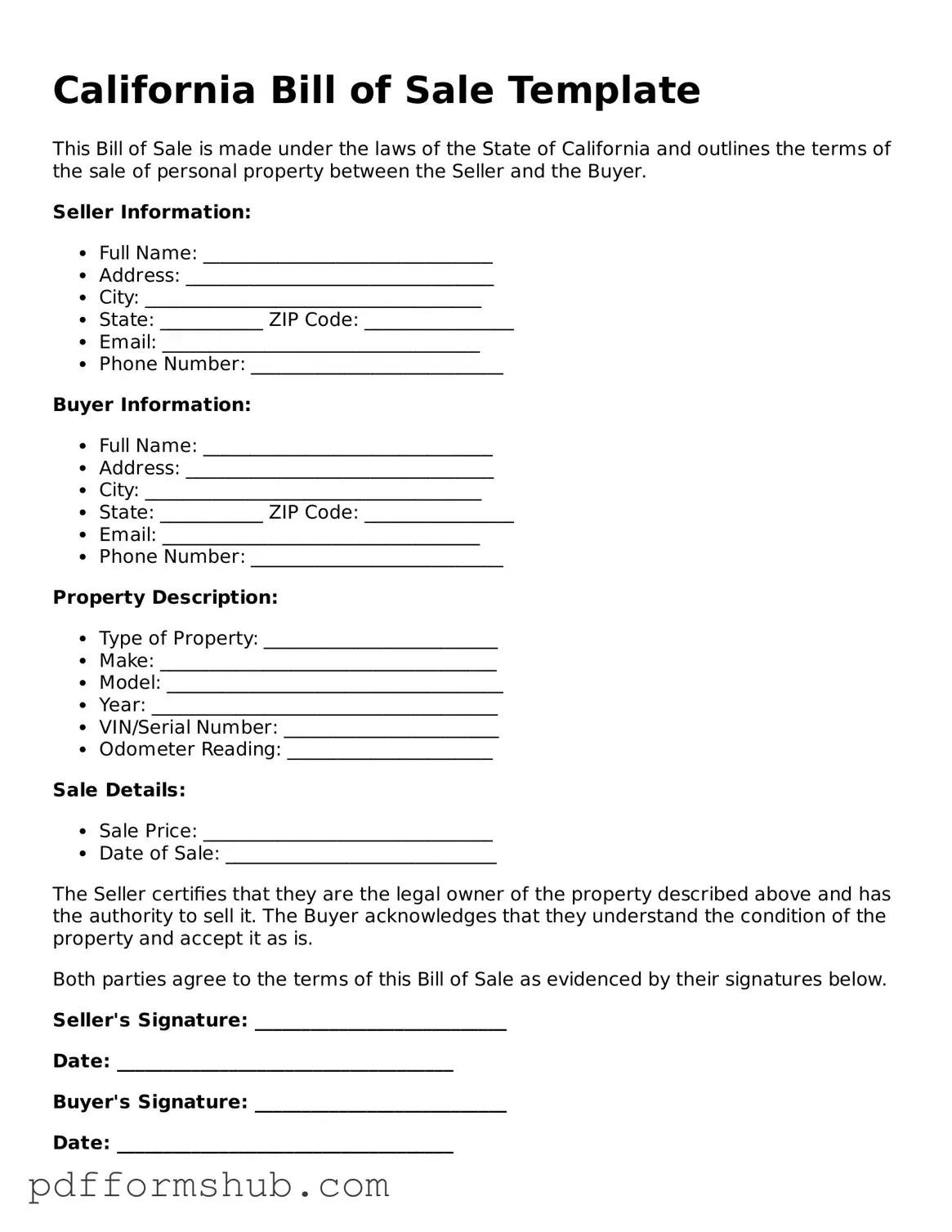The California Bill of Sale form serves as an essential document in various transactions, particularly when it comes to the sale of personal property, vehicles, or other significant assets. This form not only provides a written record of the exchange but also protects the rights of both the buyer and the seller. Typically, it includes vital information such as the names and addresses of both parties, a detailed description of the item being sold, and the purchase price. Additionally, the form may contain clauses regarding warranties or the absence thereof, ensuring that both parties have a clear understanding of their obligations. In California, having a properly completed Bill of Sale can facilitate the transfer of ownership and may be required for registering vehicles with the Department of Motor Vehicles. Understanding the components and significance of this document is crucial for anyone engaging in a sale, as it lays the groundwork for a smooth and legally sound transaction.
